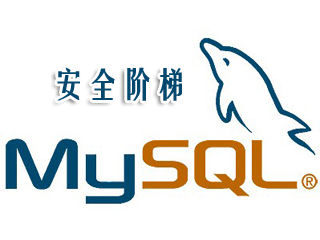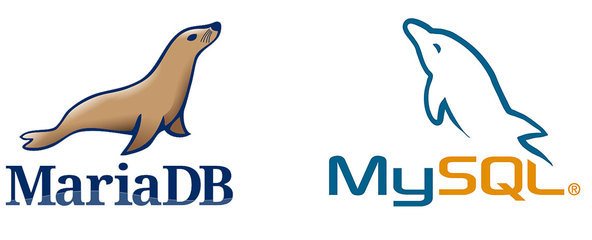10 recommended articles about partition function
Overview: When I saw the partition before, I pinched it, it was so tall. Yesterday I finally learned what partitioning is, but it’s nothing more than that. To summarize today, a good memory is not as good as a bad writing. MySQL supports partitioning functionality starting from 5.1. In one sentence, partitioning means: dividing a table into multiple areas (pages/files) according to certain rules (range/list/hash/key, etc.) for storage. For MySQL application development, there is no difference between partitioning and non-partitioning (that is, it is transparent to the application). It's like "breaking it into pieces" in a breakout battle. MySQL supports most storage engines (such as MyISAM, InnoDB, Memory, etc.) to create partitions, but does not support MERGE and CSV to create partitions. All partitions in the same partition table must be of the same storage engine. Make an example: #Create a myisam table with 5 hash partitions CREATE TABLE `test`.`partition_t1`( `id` INT UNSIGNED
1. Detailed introduction to partitions in mysql

Introduction: When I saw the partition, I pinched it, it was so tall. Yesterday I finally learned what partitioning is, but it’s nothing more than that. To summarize today, a good memory is not as good as a bad writing. MySQL supports partitioning function starting from 5.1. In one sentence, partitioning means: dividing a table into multiple areas (pages/files) according to certain rules (range/list/hash/key, etc.) for storage. For MySQL application development, there is no difference between partitioning and non-partitioning (that is, it is transparent to the application). It's like "breaking it into pieces" in a breakout battle. MySQL supports most...
2. Detailed explanation of mysql partition function and example code analysis

##Introduction: The following editor will bring you a detailed explanation of the mysql partition function and an example analysis. The editor thinks it’s pretty good, so I’ll share it with you now and give it as a reference. Let’s follow the editor and take a look
3. [Original] Optimization example based on MySQL horizontal partitioning
Introduction: We know that MYSQL5.1 begins to support horizontal partitioning. Let's try how to optimize queries on partitioned tables. Generally speaking, the optimization principles are the same as optimizing individual tables, ensuring that
4. Oracle 11g automatically creates partitions (INTERVAL PATITION) for the table on disk The subsequent scheduled partition deletion
Introduction: The TRUCK_GPS_TRANS table uses the INTERVAL PATITION function of oracle11 to automatically create partitions by day. Now it is necessary to regularly delete the partition data 30 days ago and keep the table. There are only
5. MySQL Partitioning RANGE HASH
Introduction: Let’s discuss RANGE with HASH and RANGE combined with HASH partitioning operation. After Mysql5.1, the partitioning function appeared. Table partitioning is like dividing a large table into several small ones.
6. A little understanding of Oracle table partitioning
Introduction: Oracle's table partitioning capabilities bring great benefits to a variety of applications by improving manageability, performance, and availability. Typically, partitioning enables certain query and maintenance operations
7. Looking forward to the release of the official version of MySQL 5.1
Introduction: The official version of MySQL 5.1 has not yet been released. I am waiting for it just because of its table partitioning function. With this function, the problem of too much data in a table that will seriously affect the speed is solved
8. Database Optimization - Creation and Classification of Oracle Table Partitions
Introduction: Oracle’s table partitioning feature brings benefits to a variety of applications by improving manageability, performance, and availability. of great benefit. Typically, partitions enable certain query and maintenance operations
Introduction: The partition function has been supported since mysql 5.1.3. The records stored in the mysql table and the index information corresponding to the table are finally stored on the computer's hard disk in the form of files. With the partition function, these records can be distributed to different data files according to certain partition rules. , there are currently four partitioning rules, namely RANGE, LIST, HASH and KEY,
10. MySQL 5.6 Detailed explanation of GTID-based and multi-threaded replication

Introduction: 1. New features of MySQL5.6 MySQL5.6 mainly focuses on query performance optimization and InnoDB improvements to support high throughput A large number of transactions, NoSQL-style API, improvements to partitioning functions, improvements to data replication, and the addition of PERFORMANCE_SCHEMA
[Related Q&A recommendations]:
## What are the implementation plans for horizontal table splitting in #mysql?
php - Regarding the issue of MySQL database table partitioning
Whether mysql partition has any practical value
The above is the detailed content of 10 recommended articles about partition function. For more information, please follow other related articles on the PHP Chinese website!

Hot AI Tools

Undresser.AI Undress
AI-powered app for creating realistic nude photos

AI Clothes Remover
Online AI tool for removing clothes from photos.

Undress AI Tool
Undress images for free

Clothoff.io
AI clothes remover

AI Hentai Generator
Generate AI Hentai for free.

Hot Article

Hot Tools

Notepad++7.3.1
Easy-to-use and free code editor

SublimeText3 Chinese version
Chinese version, very easy to use

Zend Studio 13.0.1
Powerful PHP integrated development environment

Dreamweaver CS6
Visual web development tools

SublimeText3 Mac version
God-level code editing software (SublimeText3)

Hot Topics
 How to solve the problem of mysql cannot open shared library
Mar 04, 2025 pm 04:01 PM
How to solve the problem of mysql cannot open shared library
Mar 04, 2025 pm 04:01 PM
This article addresses MySQL's "unable to open shared library" error. The issue stems from MySQL's inability to locate necessary shared libraries (.so/.dll files). Solutions involve verifying library installation via the system's package m
 Reduce the use of MySQL memory in Docker
Mar 04, 2025 pm 03:52 PM
Reduce the use of MySQL memory in Docker
Mar 04, 2025 pm 03:52 PM
This article explores optimizing MySQL memory usage in Docker. It discusses monitoring techniques (Docker stats, Performance Schema, external tools) and configuration strategies. These include Docker memory limits, swapping, and cgroups, alongside
 How do you alter a table in MySQL using the ALTER TABLE statement?
Mar 19, 2025 pm 03:51 PM
How do you alter a table in MySQL using the ALTER TABLE statement?
Mar 19, 2025 pm 03:51 PM
The article discusses using MySQL's ALTER TABLE statement to modify tables, including adding/dropping columns, renaming tables/columns, and changing column data types.
 Run MySQl in Linux (with/without podman container with phpmyadmin)
Mar 04, 2025 pm 03:54 PM
Run MySQl in Linux (with/without podman container with phpmyadmin)
Mar 04, 2025 pm 03:54 PM
This article compares installing MySQL on Linux directly versus using Podman containers, with/without phpMyAdmin. It details installation steps for each method, emphasizing Podman's advantages in isolation, portability, and reproducibility, but also
 What is SQLite? Comprehensive overview
Mar 04, 2025 pm 03:55 PM
What is SQLite? Comprehensive overview
Mar 04, 2025 pm 03:55 PM
This article provides a comprehensive overview of SQLite, a self-contained, serverless relational database. It details SQLite's advantages (simplicity, portability, ease of use) and disadvantages (concurrency limitations, scalability challenges). C
 How do I configure SSL/TLS encryption for MySQL connections?
Mar 18, 2025 pm 12:01 PM
How do I configure SSL/TLS encryption for MySQL connections?
Mar 18, 2025 pm 12:01 PM
Article discusses configuring SSL/TLS encryption for MySQL, including certificate generation and verification. Main issue is using self-signed certificates' security implications.[Character count: 159]
 Running multiple MySQL versions on MacOS: A step-by-step guide
Mar 04, 2025 pm 03:49 PM
Running multiple MySQL versions on MacOS: A step-by-step guide
Mar 04, 2025 pm 03:49 PM
This guide demonstrates installing and managing multiple MySQL versions on macOS using Homebrew. It emphasizes using Homebrew to isolate installations, preventing conflicts. The article details installation, starting/stopping services, and best pra
 What are some popular MySQL GUI tools (e.g., MySQL Workbench, phpMyAdmin)?
Mar 21, 2025 pm 06:28 PM
What are some popular MySQL GUI tools (e.g., MySQL Workbench, phpMyAdmin)?
Mar 21, 2025 pm 06:28 PM
Article discusses popular MySQL GUI tools like MySQL Workbench and phpMyAdmin, comparing their features and suitability for beginners and advanced users.[159 characters]






